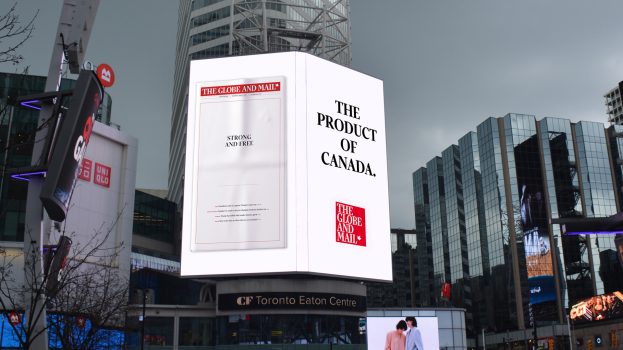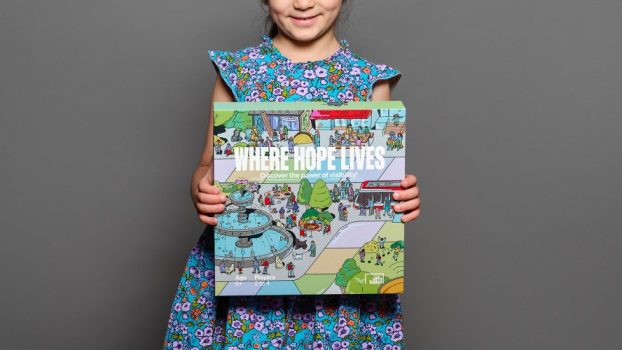Admit it: you’re not really sure what data fusion is. You know that a CMDC committee is working on something grandly dubbed the Unity Project. You know that it has something to do with cutting down on duplicated research in Canada by mashing the present research into super databases – but the details on how this would work, and what it will mean for the larger Canadian marketing community are fuzzy.
If that’s the case, it’s time to meet Mr. Fusion – a.k.a. Tony Jarvis, SVP, director of strategic insights at New York’s MediaCom. As well as being a former Olympic swimming finalist, Jarvis was chosen as Mediaweek’s 2001 Media Research All Star. He is currently on the board of directors of the U.S.-based Media Research Center, the Advertising Research Foundation (where he’s also chair of the Data Fusion Committee) and the Council for Marketing and Opinion Research. Most importantly, he played a key role in introducing fusion to the U.S. as co-chair of the very first ARF workshops on fusion in December, 2000. Jarvis knows fusion.
And so should you, because data integration is coming to Canada, and the method used could well be fusion.
To date, the Unity Project has successfully come up with a standardized set of demographic descriptors to be used by all audience measurement companies. Hugh Dow, president of Toronto’s M2 Universal and head of the Unity Project, says the committee has now moved on to phase two, which means finding a company to integrate the data gathered by PMB, NADbank, Nielsen, BBM and the other measurement organizations.
A request for proposal has already been issued, and at press time, six companies had put in bids. They are: Czaia Marktforschung (based in Germany), Generation 5 (Canada), Jan Kestle (was president of Compusearch Canada, now has her own Canadian company), Kantar Media (U.S.), SM Research (Canada) and Telmar (U.S.).
‘We have a fabulous cross-section of interested parties,’ says Dow, ‘and some of them could well come forward with fusion solutions, while others could have other techniques. We’re not insisting on fusion. If there is another, superior means, and they can convince us of that, we will, of course, look at that.’
But as Dow points out, fusion in Germany is de rigeur, and Telmar and Kantar are already actively fusing data as well. We’ll know the definitive answer come mid-November, when the integration company is chosen. After that comes a data integration test, using numbers from the Toronto area, to be completed in mid-January.
In the meantime, Tony Jarvis spoke to Strategy about what data fusion is, how it’s done and how it could affect every aspect of producing advertising in Canada – from the total TV ad spend, to the role played by creatives.
What is data fusion?
Well, you’re asking the right guy, but only because of some wonderful colleagues down here. I’ve been asked to chair the ARF [Advertising Research Foundation] Data Fusion committee, and what we’re trying to do is produce some ARF guidelines for data fusion, which is the first stage. So we actually just came up with a definition, although this hasn’t had final blessing from the ARF, so it’s unofficial.
It is: ‘Data fusion is the creation of a pseudo single-source respondent level database from two or more respondent level databases linked at the respondent level and containing common elements.’
Could you give me an example to illustrate what that means?
I guess from a Canadian perspective, I might look at PMB and NADbank. This makes for an easier example because they’re both print databases, and broadcast always gets a little tricky. Let’s say we decided it would be nice if we had all the product data from PMB in NADbank, and at the same time, all the newspaper readership data from NADbank in PMB.
First of all, one should recognize that they are both high-quality, industry-recognized surveys. Because if you fuse two crummy surveys, you’re not going to end up with better data. So you have to start with two or more quality surveys, and both must be accessed via suitable software at the respondent level.
So these are not aggregate databases, they are both respondent level databases and accessed that way.
If we fuse PMB and NADbank, the users would run the data, for all intents and purposes, the same way they would have run either PMB or NADbank. So the user will see no real difference in the software or how he analyses it – it would be just like running one or the other. The big difference is that now I can run magazines and newspapers at the same time, or access richer PMB product use information in NADbank.
But it’s not like those two databases are being physically merged together to form some big super database, is it? Doesn’t the fusion actually happen only when users call up the data?
No. That’s not true. To do a fusion, you need some common elements. And basically the more there are, and the more you use, the better the fusion. If you only use demographics as what we call the link variables, you’re probably not going to have a very good fusion for the vast majority of categories that you want to analyze.
So in terms of common element or links, which are sometimes called ‘hooks,’ it’s fine to have demos, but you need a lot more than demos.
And then a fuser, a company that’s an expert at putting these databases together based on the hooks, actually does create a new pseudo single-source database. That’s why we call it ‘pseudo,’ because NADbank and PMB are initially two separate databases and we’ve created one single-source database at respondent level.
What does ‘at respondent level’ signify?
It means that the new database that’s created has a similar structure to the two original databases that were put together. Although you can’t get down to individual respondent information when analyzing it, it’s really as if all the respondents are sitting there with all their characteristics, with the appropriate weights, to project them up to a population.
One of the other things fusion does, other than merge the databases via a wide array of hooks, is to take care of the smaller incompatibility problems. Say PMB says the population of Canada is 35 million and NADbank says it’s 33 and a half million, which population are you going to use?
So there’s a whole bunch of those kinds of issues that the fuser takes care of. The beauty of fused databases to the user is that they are really transparent. I might as well be running PMB, or I might as well be running NADbank, in that I’m going to use pretty well the same software, I have to know what’s in there at the respondent level, and I can slice and dice the data any way I want.
For instance, if I want heavy shampoo users or heavy drinkers of Guinness, the software just goes and pulls those respondents who said ‘yes’ to the appropriate questions, then I can find out which magazines they read and which newspapers they read, and maybe if they have a certain income. So just like with the original databases, all you have to deal with are the individual respondents who meet your criteria.
So by a ‘pseudo database,’ what you mean is that for all intents and purposes, the fused database looks and acts as if one research company went out there to a single panel of respondents?
Yes. Although it may or may not be a panel. For instance, PMB and NADbank don’t use panels, but Nielsen does.
But however the sampling is done, your statement is correct. It would be like you asked all the questions asked by PMB, NADbank and Nielsen all in one shot.
Can you give me an example of what a media planner could do if Canada was successful in fusing all these databases?
The big one, because obviously the major national advertisers are television-centric, is being able to analyze Nielsen, or for that matter BBM, on lifestyle target groups rather than demographics. It will be much more meaningful to plan your television on your precise target user group, or maybe lifestyle group. You can’t do that right now, because television is only measured by demographics. So that’s a huge leap forward.
The next leap forward would be if you had several of these databases hooked together, you could then do multimedia analysis, in one database. So right around the corner is something very new, which is already being tested here in the U.S., which is a new software tool called a multimedia optimizer.
Once you’ve got a fused database, containing PMB for magazines, Nielsen for TV, NADbank for newspapers and BBM for TV and radio – all in one database – you can now give a computer optimizer a budget and a goal and say go at it. So you put all your prices in and say ‘Computer, you tell me which media I should use.’ Not just which magazines, but which magazines versus which TV shows versus which newspapers versus which radio stations.
What data would you put in about the target you are trying to reach?
The beauty is, if you’ve got all of your product and lifestyle information there, you can define your target as well as you understand who your target user really is. And that probably isn’t just adults 25 to 54.
You can put in definitions for heavy users, it could be people with a certain lifestyle. Presuming they’re in the database, whatever user attributes you’ve found through market research that really seem to drive use in your category.
Can you give me a hypothetical example for a particular product?
O.K., pet food’s a good one. Say you have a pet food account: instead of just targeting adults 25 to 54, what you would now do is target people with pets that consume a certain amount of dog food, because maybe you know that your particular brand does really well with medium to heavy consumers of dog food.
So instead of buying television for adults 25 to 54, which will hit some heavy dog food purchasers, but lots of other people as well, if you use the more exact target group, you may see a very different ranking of TV shows.
Then we put the other dimension in there. Perhaps we’ve relied very heavily on TV in the past, but now we don’t just put in the costs for TV, why not put in the costs for magazines and newspapers and maybe radio?
Because we’ve fused Nielsen with, say, PMB, we can bring magazines into the picture and say, here’s my target definition, how do magazines do against this?
What are the implications of this down the road? If they get these multimedia optimizers working, it sounds like that would be your first stop. Then the approach could be truly media neutral.
Oh absolutely. MediaCom has totally embraced what we call ‘360 degree’ or media-neutral planning. Obviously placing the creative message in all the right contact points at all the right times in all the right environments is very complex, but very important.
I think that this sense of what we call ‘real world communications’ is a result of this anticipation that fusion is just around the corner, and we’re hearing more about multimedia optimizers. People are starting to say ‘TV is still very powerful, and may remain a cornerstone, but maybe we should add more magazine, or maybe a little radio here would do the job better.’
Could you see a day when the agency says: O.K., we’ve defined our target, now we just go over to the computer and describe it, and the computer will tell us which mediums to use in what weight? And then you go to the creative department and say, these are the mediums that you have to use, because our target interacts with them most, now go ahead and do your thing.
You’ve really hit a key issue there. Yes, this is starting to bubble up. Because traditionally, advertising starts with the creative and by the time the media shop gets it, we’re told we’re going to do, say, television and radio. And essentially that comes from the account strategic group focusing on the creative.
A few of us have dared to suggest otherwise, and I think this would still be heresy in some places, but I have certainly discussed it with my colleagues at Grey Worldwide, Media-Com’s associated agency. I’ve asked them, with the amount of work that we as media professionals do to understand the target and the brand, shouldn’t we be feeding into you, or at least working with you to understand the target and the brand? And a key part of that understanding is understanding the media touchpoints and the key media avenues, so together we can say, this one should be a radio and out-of-home campaign.
Then we go to the creatives and say we understand the target from all points, including media. We understand what’s going to drive that target, what’s going to work, and here’s the media and all this other understanding about the target. And hopefully, you can still create all these fabulous cut-through messages in radio and out-of-home. As opposed to going, well it’s soup, so I’m going to use TV.























